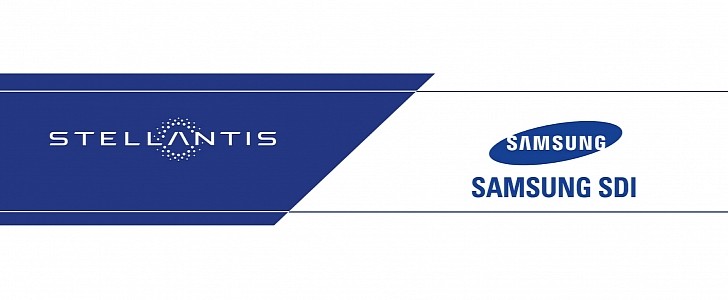When we told you about Stellantis joining forces with LGES (LG Energy Solution), we were intrigued. It seemed that the issues with Hyundai and GM did not demote other manufacturers to do business with the Korean supplier. It was only after Stellantis made a similar deal with Samsung SDI that we got the whole picture: the idea is to ensure as many Li-ion batteries as possible, regardless of the supplier.
Stellantis announced its new joint venture with Samsung SDI on October 22, and it is remarkably similar to that made with LGES. It will also have a maximum production capacity of 40 GWh per year, it is also part of the €30 billion investment in electrification, and it will supply Stellantis plants in the U.S., Canada, and Mexico, etc.
The main difference relates to the supplier and to when the new plant will start to operate: 2025. The factory with LGES will begin pumping out batteries one year earlier, in 2024. Stellantis said that this is just “one of (the) multiple battery plants dedicated to Stellantis electric vehicle production in (the) region.” That means it will establish other joint ventures with different battery suppliers.
There are still plenty of them for Stellantis to work with: SK Innovation, CATL, Gotian, and even BYD. The Chinese battery makers may be willing to partner with the automaker to establish cell manufacturing plants in North America, especially considering that they have mastered the production of LFP (lithium iron phosphate) cells.
Tesla has recently announced all its entry-level vehicles will use this sort of battery all over the world. In other words, it will need its LFP supplier to establish in North America, preferably in the U.S. Stellantis may soon cut a deal with the companies that produce these cells, such as CATL and BYD.
What is pretty clear is that the race to ensure a steady supply of batteries for electric cars has started, and Stellantis is not willing to put all its eggs in a single basket. It is also not comfortable letting suppliers produce cells for it without its involvement, hence the joint ventures. Expect to hear about new ones from Stellantis pretty soon.
The main difference relates to the supplier and to when the new plant will start to operate: 2025. The factory with LGES will begin pumping out batteries one year earlier, in 2024. Stellantis said that this is just “one of (the) multiple battery plants dedicated to Stellantis electric vehicle production in (the) region.” That means it will establish other joint ventures with different battery suppliers.
There are still plenty of them for Stellantis to work with: SK Innovation, CATL, Gotian, and even BYD. The Chinese battery makers may be willing to partner with the automaker to establish cell manufacturing plants in North America, especially considering that they have mastered the production of LFP (lithium iron phosphate) cells.
Tesla has recently announced all its entry-level vehicles will use this sort of battery all over the world. In other words, it will need its LFP supplier to establish in North America, preferably in the U.S. Stellantis may soon cut a deal with the companies that produce these cells, such as CATL and BYD.
What is pretty clear is that the race to ensure a steady supply of batteries for electric cars has started, and Stellantis is not willing to put all its eggs in a single basket. It is also not comfortable letting suppliers produce cells for it without its involvement, hence the joint ventures. Expect to hear about new ones from Stellantis pretty soon.










